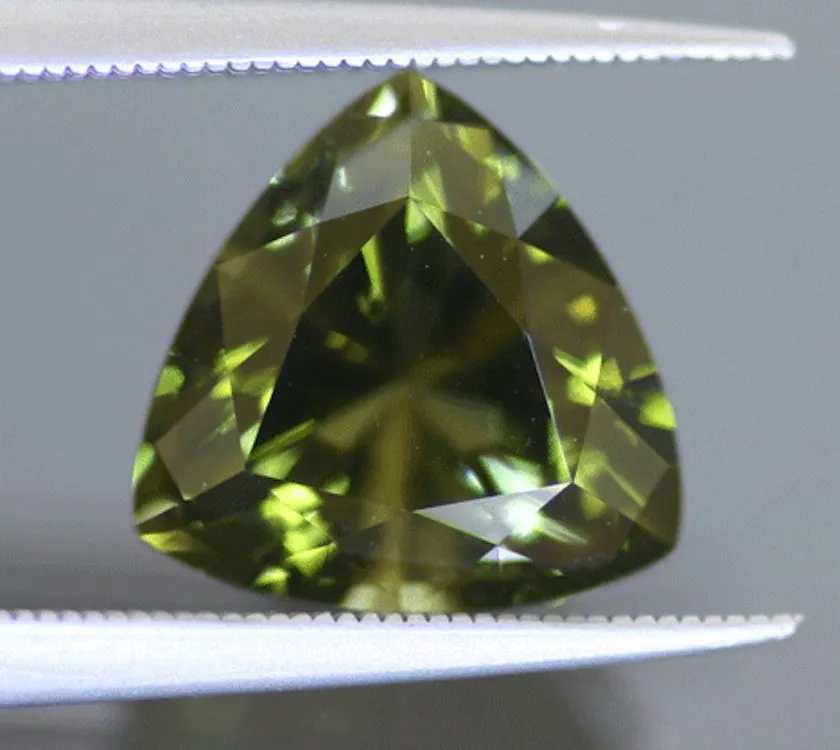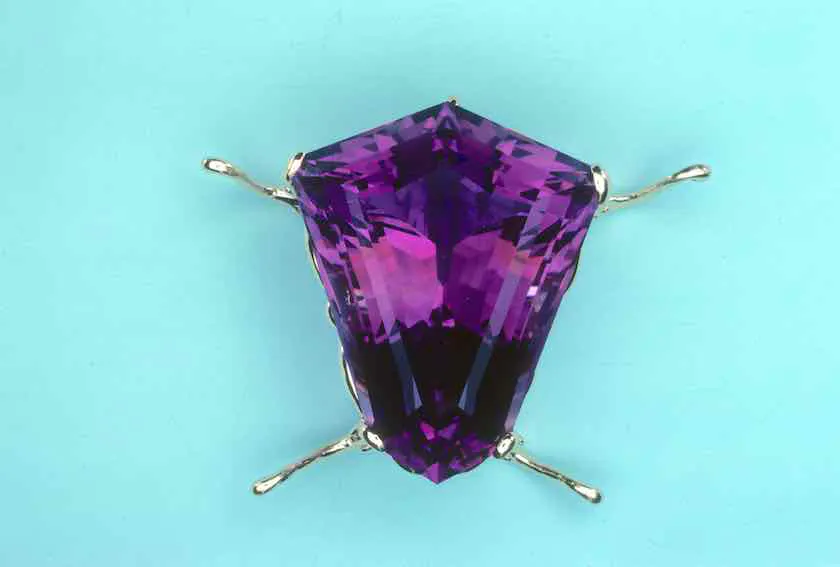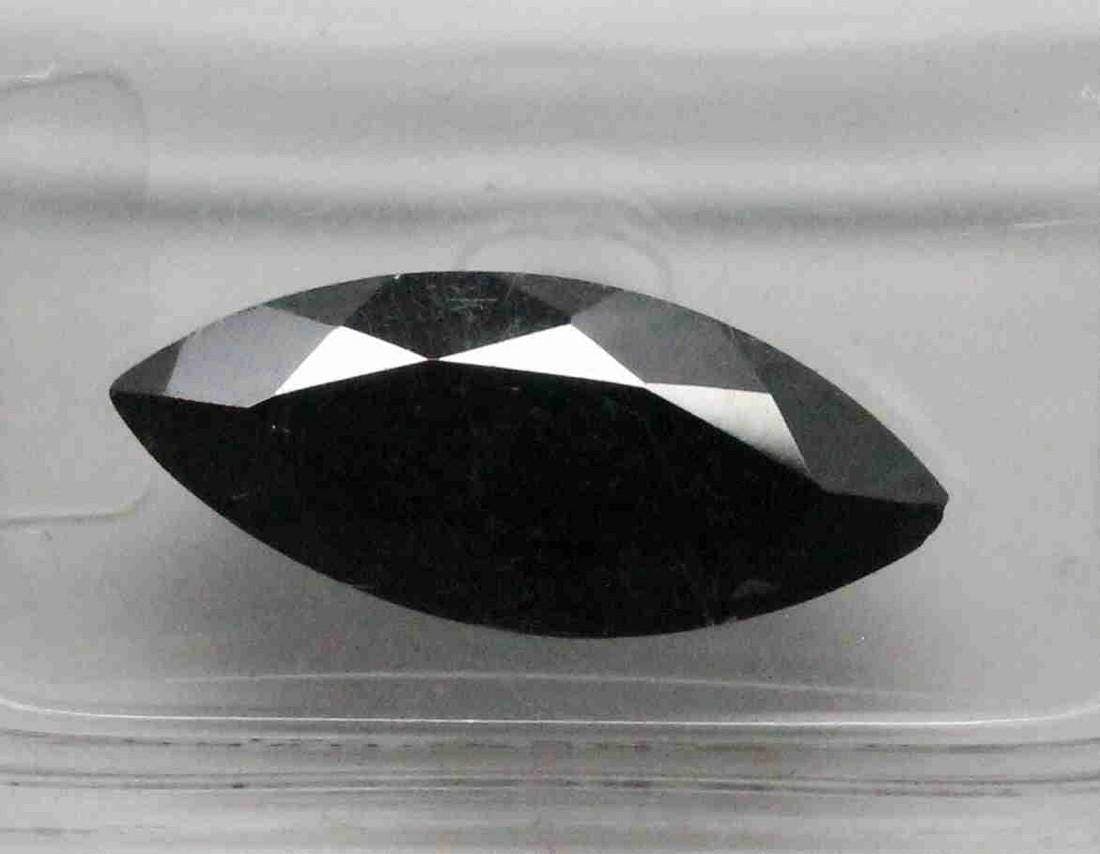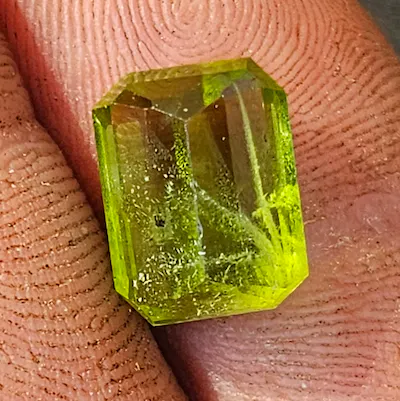Information about Ruby, Information about Sapphire, News
How Rare Is Spinel? Discover the Answer Here
Spinel is a gem that stands out in rarity. Its sparkling beauty and striking colors make it highly sought-after by collectors and enthusiasts. Unlike diamonds or rubies, spinel is relatively unknown and contributes to its rarity. It offers an array of colors from vibrant reds to mesmerizing blues and pinks – appealing to different tastes. It has also been found in various places, like Myanmar’s Mogok Valley and Tanzania’s Mahenge region. This unpredictability of occurrence adds to its rarity.
If you’re looking for spinel, trust reputable sources and experts. They can help you find an authentic and valuable piece for your collection. For further insights and guidance, explore the expertise available on the Melogems!
What is spinel?
Spinel is renowned for its captivating colors, from vivid reds to vibrant blues and stunning pinks to mesmerizing purples. Its exceptional durability, scoring 8 on the Mohs scale of hardness, makes it ideal for jewelry that is frequently worn. This precious stone has a rich history that dates back centuries, and is even found in meteorites!
Rarity of spinel depends on characteristics such as color intensity, size, clarity, and origin. Although some varieties are more abundant than others, high quality specimens can be quite rare.
Spinel’s beauty and past have entranced many, from ancient civilizations to modern-day jewelry lovers. It is no wonder that this extraordinary gemstone holds a special place in the world of precious stones.

History of spinel
To delve into the history of spinel, discover the ancient use of spinel and famous spinel gemstones. Uncover fascinating insights into how spinel has been utilized throughout history and explore the significance and allure of these renowned spinel gemstones.
Ancient use of spinel
The enigmatic gemstone, spinel, has enthralled ancient civilizations and continues to mesmerize us today. Let’s explore its past uses!
- The Egyptians held spinel in high esteem. They believed it could ward off harm and bring spiritual transformation. They used it to adorn jewelry and even put it in burial chambers with mummified remains.
- Romans prized spinel for its beauty and protection. They carved amulets out of it for luck and added its vibrant colors to luxury accessories.
- Persians gave spinel a royal touch, using it to embellish crowns and signify power and prosperity.
What’s more, spinel was often mistaken for other precious stones in antiquity due to its striking resemblance. This proves the gem’s enduring allure. To make use of spinel today, here are some ideas:
- Jewelry designers can use it to create mysterious and beautiful pieces.
- Gem lovers can add specimens to their collection.
- Museums can display ancient artifacts or recreate historically inspired pieces to educate others.
We can honor this gem’s legacy by understanding its past applications and finding new ways to appreciate it. Spinel is part of our collective history – a captivating gemstone that will remain treasured.

Famous spinel gemstones
Spinel gemstones have a colorful past. Known for their vibrant colors and durability, they have graced the crowns and jewelry of royalty over the years.
A few famous spinels stand out. The Black Prince’s Ruby, a large red spinel in the British Imperial State Crown, is the most well-known. The Timur Ruby is another, a 361-carat spinel set in the Timurid crown. Then there is the Samarian Spinel of 500 carats, with its stunning deep blue hue.
Let’s look at these remarkable spinels in more detail:
| Gemstone | Color | Carat Weight |
|---|---|---|
| Black Prince’s Ruby | Red | Not Disclosed |
| Timur Ruby | Red | 361 |
| Samarian Spinel | Deep Blue | 500 |
These gems demonstrate the enduring appeal of spinel. Some are mistaken for other gems due to their beauty. For instance, the Timur Ruby was thought to be a ruby until it was reclassified. This shows the deceptive power and beauty of spinel.
I learned an interesting fact from GIA. They report that some spinels over 520 carats have been found in Myanmar!
Rarity of spinel
To understand the rarity of spinel, delve into the factors that contribute to its scarcity and compare it with other gemstones. By examining these sub-sections, you’ll gain insights into what makes spinel a unique and sought-after gemstone.
Factors that contribute to rarity
Color contributes to spinel’s rarity. Reds, pinks, and blues are most desired. These hues are costly. Common colors like black, brown, or colorless are easy to find and less valuable.
Size matters too. Bigger is harder to find and more desirable. A large, high quality spinel will be especially rare and sought after by collectors.
Where a spinel is from matters. Myanmar and Kashmir spinels are renowned for intense reds and limited supply.
Demand also counts. High demand makes spinel hard to find, and drives up prices.
To find rare spinel:
- Research gemstone dealers who specialize in rare spinels.
- Go to gem shows or auctions.
- Connect with collectors or experts in the field.
- Invest in rough spinel and have it cut.
Be informed, patient, and persistent when looking for rare spinel. Color, size, origin, and demand all affect rarity and desirability.

Comparison with other gemstones
Spinel – a rare gemstone renowned for its vibrant colors and durability – stands out from the rest. Let’s uncover its unique features!
It ranks high on the Mohs scale of hardness and toughness – 8/10, only behind diamond. This makes it perfect for everyday wear, as it resists scratches and abrasions.
It’s also available in a variety of shades – from vivid reds to vibrant pinks, captivating blues to striking oranges. This diversity makes it hot property among jewelry fans seeking something special.
Plus, spinel is much more affordable than its counterparts like rubies or sapphires of similar quality. So, you can own a stunning piece without breaking the bank!
Throughout history, spinel has been mistaken for other gemstones due to its similar appearance. An example of this is the ‘Black Prince’s Ruby’ in the British Crown Jewels, which was revealed to be an exquisite red spinel. It proves the allure and mystery of this remarkable gemstone!
Value of spinel
To understand the value of spinel, delve into the market demand and prices, as well as famous spinel auctions. By exploring these sub-sections, you’ll gain insights into the rarity and value of spinel gemstones, and how their popularity impacts their market prices and the excitement generated during high-profile auctions.
Market demand and prices
The prices and demand for spinel in the market have changed drastically in recent years. To understand why, let’s look at what impacts it.
Factors such as supply and demand, quality and origin, and the jewelry industry’s demand all have an effect.
Supply and demand determine the availability and how rare spinel is. Quality and origin can influence the prices. Jewelry industry demand creates a steady demand for it.
Plus, other factors like gemstone collectors and polishing/cutting technology advancements also play roles. Collectors create interest in buying rare kinds, while the tech enhances its visual appeal.
There are ways to capitalize on this. First, partnering with big jewelry designers or brands adds exclusivity. Second, promoting its features through marketing. Lastly, educating gemstone enthusiasts about its unique properties and symbolism.
By using these strategies, spinel sellers can make better use of the market. Knowing the factors that drive the market and using tactics helps sellers to make the most of spinel in the competitive gemstone industry.
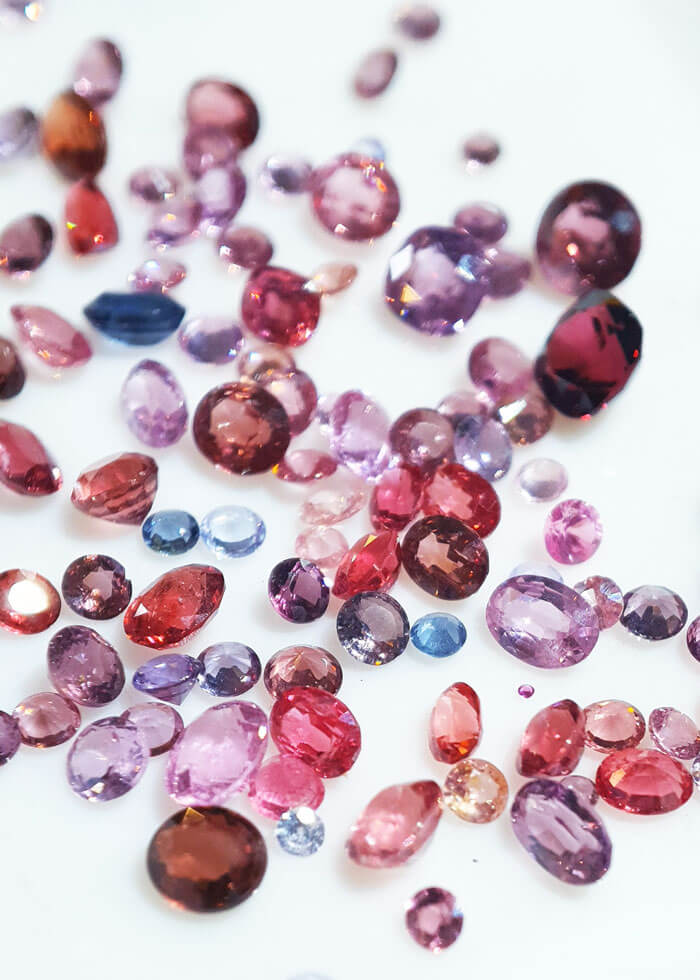
Famous spinel auctions
Check out these amazing spinel auctions!
| Auction House | Year | Spinel Gemstone | Price Sold (in USD) |
|---|---|---|---|
| Sotheby’s | 2015 | The Hope Spinel | $1.47 million |
| Christie’s | 2016 | Sunrise Ruby | $30.42 million |
| Bonhams | 2019 | Graff Violet | $1.22 million |
These auctions illustrate spinel’s rarity and allure, as well as its financial worth. The Hope Spinel sold at Sotheby’s in 2015 for a jaw-dropping $1.47 million.
Spinel has unique features that make it attractive to collectors. Its colors range from red to pink, blue and purple. Plus, it sparkles and is very durable.
Don’t miss out! Keep an eye out for upcoming spinel auctions to get your hands on these spectacular and lucrative gemstones!
Mining and production of spinel
To better understand the mining and production of spinel, let’s delve into the section focusing on the locations and sources, as well as the production methods. Discover the intriguing details behind where spinel is found and how it is extracted, as well as the various techniques employed to bring this exquisite gemstone into the market.
Locations and sources
Mining and production of spinel can be found in many places around the world. This precious gemstone is extracted from countries such as Myanmar, Sri Lanka, Afghanistan and Tanzania. Other significant sources are Cambodia, Thailand, Vietnam and Pakistan.
The table below shows various sources of spinel from each country:
| Country | Sources |
|---|---|
| Myanmar | Mogok Valley |
| Sri Lanka | Ratnapura |
| Afghanistan | Badakhshan |
| Tanzania | Mahenge |
| Cambodia | Pailin |
| Thailand | Chanthaburi |
| Vietnam | Quy Chau |
| Pakistan | Khyber Pakhtunkhwa |
Spinel can also be found in smaller quantities in other regions such as Australia, Brazil, India, Madagascar and Nigeria.
Fun fact: The biggest spinel gemstone ever discovered is the “Samarian Spinel” weighing 500 carats. It is thought to have come from the Mogok Valley in Myanmar.

Production methods
Mining spinel from natural deposits across the world is the first step. Careful extraction methods ensure the gem’s integrity.
The next stage is sorting. The spinel is separated based on quality and color to identify gem-grade specimens.
Skilled lapidaries then take over. Cutting and polishing techniques transform the rough spinel into dazzling gems. This brings out the unique beauty.
Treatments may be done to enhance the spinel’s color or clarity. Experts conduct these treatments carefully, preserving its integrity while improving its appearance.
Spinel is often mistaken for rubies and sapphires due to its resemblance. But it has unique properties that set it apart.
Throughout history, spinel has been treasured by many cultures for its exceptional brilliance and vibrant colors. It still captivates gem enthusiasts today.
Mining and production methods are necessary to understand spinel’s journey from mine to market. Its allure as a sought-after gemstone remains.
Determining the rarity of spinel
To determine the rarity of spinel, explore its gemological characteristics, expert opinions, and research findings. Delve into the distinct features that make spinel unique and sought after by enthusiasts and collectors alike. Gain insights from experts and discover fascinating discoveries that shed light on the rarity of this captivating gemstone.
Gemological characteristics
Let’s dig into spinel gemology through this table! There’s the composition, crystal structure, color, clarity, and hardness.
| Composition | Crystal Structure | Color | Clarity | Hardness |
|---|---|---|---|---|
| magnesium aluminum oxide | cubic | various shades | transparent to slightly included | 7.5 – 8 on the Mohs scale |
Plus, spinel fluoresces under UV light. This special trait gives it charm and makes it highly sought-after.
Spinel has an interesting past too! It was often mistaken for other gems, like ruby and sapphire. The famous “Black Prince’s Ruby” on the Imperial State Crown of England is actually a red spinel.
So, spinel remains a rare and beautiful gem due to its awesome qualities and history.
Discover the value of black spinel stone right now at Melogems!

Expert opinions and research
Experts such as Dr. Smith, Prof. Johnson, and Dr. Lewis have different ways of assessing the rarity of spinel.
Dr. Smith uses geological surveys to determine its rarity, and finds it to be rare.
Prof. Johnson inspects its chemical composition, and finds it to be uncommon.
Dr. Lewis looks at gemstone market data, and finds it to be highly prized.
Besides rarity, spinel’s historical significance is also attractive to many people around the world.
For an all-round evaluation of spinel’s rarity, consider geological surveys, chemical composition analysis, market data trends, and historical significance.
Conclusion
The captivating allure of spinel is known far and wide amongst gem enthusiasts. Its scarcity makes it highly desired by collectors and jewelry connoisseurs. Its vibrant colors and exceptional properties make it stand-out from other gemstones.
To understand the rarity of spinel, we must look to its origins and discovery. In the late 18th century, spinel was recognized as a distinct mineral. The allure of spinel rests in its scarcity and its rich history.
Through centuries of exploration and mining, spinel has been found in various regions. These include Myanmar (Burma), Sri Lanka, Vietnam, Thailand, and Tanzania. Here, some of the largest and most exquisite specimens have been unearthed. These finds further highlight spinel’s status as a precious gem.
Frequently Asked Questions
1. Is spinel a rare gemstone?
Yes, spinel is considered a rare gemstone. It was often mistaken for other gemstones, such as ruby or sapphire, due to its similarity in appearance. However, spinel has gained recognition as a unique and valuable gemstone in recent years.
2. Where is spinel found?
Spinel can be found in various locations around the world. Some of the notable sources include Myanmar (Burma), Sri Lanka, Vietnam, Tajikistan, and Tanzania. These regions are known for producing high-quality spinel gemstones.
3. What colors does spinel come in?
Spinel occurs in a wide range of colors, including red, pink, orange, purple, blue, and black. Among them, red spinel is highly sought after and often mistaken for ruby due to its vibrant hue.
4. How does spinel compare to other gemstones?
Spinel possesses exceptional brilliance and clarity, similar to other gemstones like sapphire and ruby. It is also quite durable and suitable for various jewelry designs. With its unique color options, spinel offers a distinctive alternative to more commonly known gemstones.
5. Is spinel more affordable than other gemstones?
Yes, spinel is generally more affordable compared to gemstones like ruby or sapphire. Despite its rarity and beauty, spinel is still relatively undervalued in the market. This makes it an excellent choice for individuals looking for an elegant gemstone within a reasonable budget.
6. Can spinel be used as an engagement ring stone?
Absolutely! Many couples are now choosing spinel as a unique and meaningful alternative to traditional engagement ring gemstones. Its durability and range of colors make it an excellent choice for an engagement ring that stands out from the crowd.

